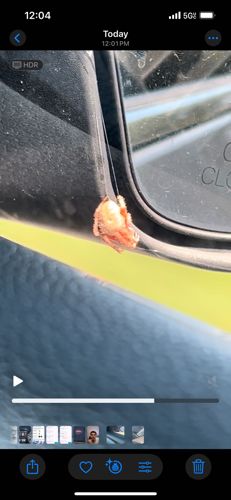Orb Weaver Spider (likely an Argiope or Neoscona species)
Scientific Name: Various species, often Argiope aurantia (Garden Spider), Neoscona crucifera (Hentz Orbweaver), or similar large orb weavers, given the visible robust abdomen and leg structure. Exact species cannot be determined without clearer morphological details.
Order & Family: Order: Araneae, Family: Araneidae (Orb Weavers)
Size: Body length can range from 5 mm to 30 mm (0.2 to 1.2 inches) for females; males are often much smaller. Leg span can be significantly larger due to their long legs.

Natural Habitat
Orb weavers are found in a wide variety of habitats, including gardens, fields, forests, close to human dwellings, and any area with suitable anchor points for their webs (trees, shrubs, fences, eaves). The specific species may dictate more precise habitat preferences.
Diet & Feeding
Mainly insects caught in their webs, such as flies, moths, mosquitoes, and other small flying or jumping insects.
Behavior Patterns
Orb weavers are known for constructing elaborate, wheel-shaped webs to catch prey. They typically rebuild their webs daily, often consuming the old web in the morning to recycle the silk. They are primarily nocturnal or crepuscular hunters. When disturbed, they may drop from their web or vibrate it rapidly to appear less distinct.
Risks & Benefits
Risks: Orb weaver spiders are generally not considered dangerous to humans. Their venom is typically not medically significant, causing only mild, localized pain, redness, or swelling similar to a bee sting if a bite occurs (which is rare, as they are not aggressive). Benefits: They are highly beneficial as natural pest control, consuming large numbers of insects, many of which can be agricultural pests or nuisances to humans. They play a crucial role in ecosystem balance.
Identified on: 7/28/2025